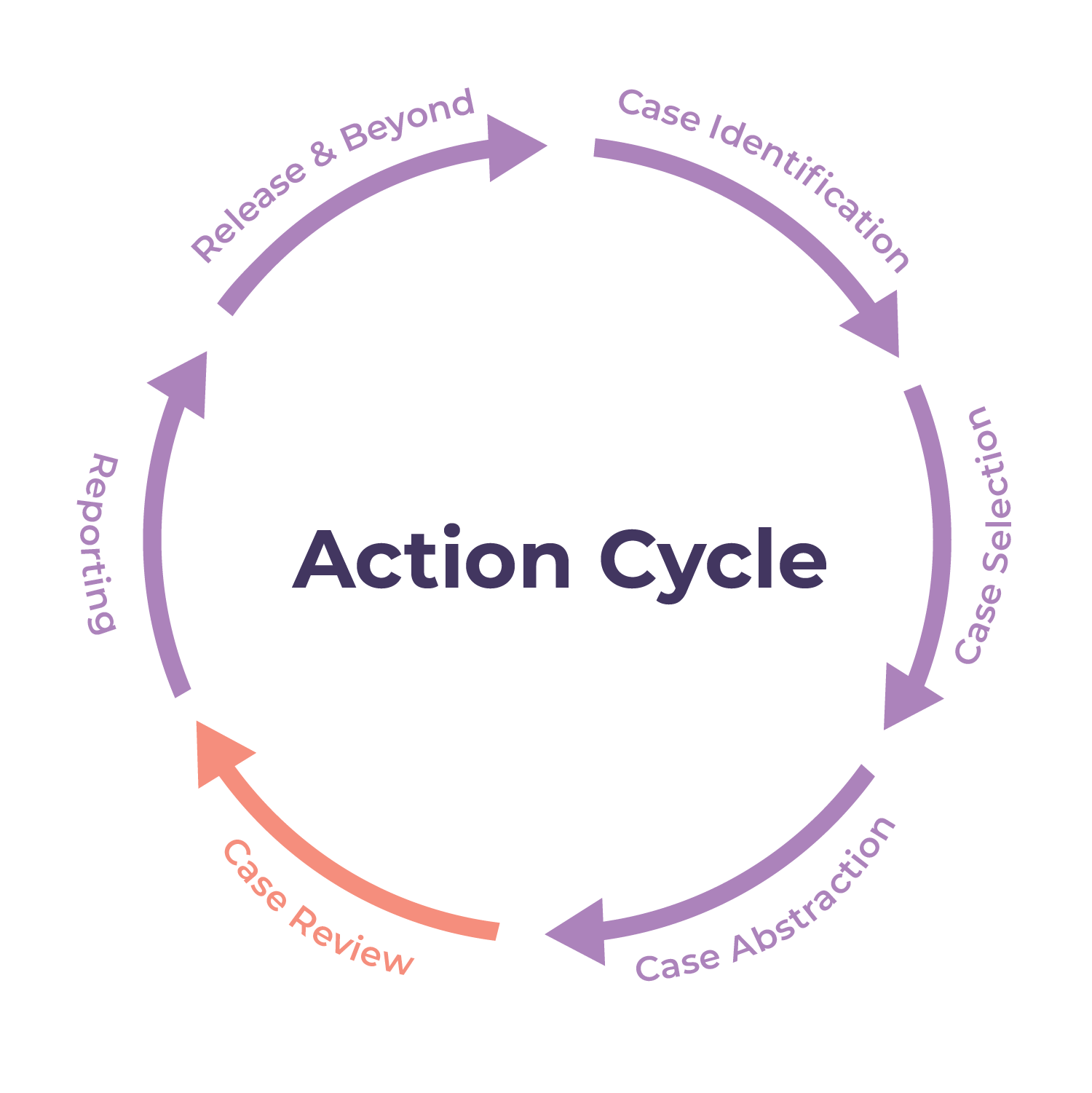“The ethic of the review is one that’s respectful and an opportunity for self-reflection as a community or as a society. There are so many people that have been affected and are experiencing trauma from that death. To me, it’s an important practice of self reflection and of grief… It’s an opportunity for us to grieve people who have died, to grieve that these are outcomes and inequities that are happening in our society. And to allow that to be the fire to do better and ensure that survival is not the floor. And there is so much more that we can do.”
-Shivani Bhatia, Coordinator for the Colorado Maternal Mortality Review Committee
Structuring the Discussion
Once the cases are selected, abstracted, and summarized, the Maternal Mortality Review Committee (MMRC) is convened by the members of the committee in an in-person or virtual meeting to review the individual cases. Case narratives are shared in advance and committee members are asked to review and prepare.
Meetings should follow a standard and structured agenda. Doing so has many benefits, including:
- Promoting consistent and complete case review
- Enhancing committee focus and keeping case discussions efficient and on track
- Recording data and committee findings and recommended actions in a standard format that is comparable to other states and can be analyzed over time
Although the structure of the review meeting may vary by committee, below is an outline of a recommended agenda:
- Share committee successes translating past recommendations to action
- Review the authority and protections under which the committee operates
- Ask each MMRC member to sign the confidentiality agreement
- Review the mission, vision, purpose, and goals established by the committee and documented in the policies and procedures
- Ensure shared understanding of the definitions of pregnancy-associated, pregnancy-related, and pregnancy-associated but not related death
- Use a method selected by the MMRC to honor each lost life
- Express commitment to identify and act against bias and racism with one another and in the case documentation, and review methods for doing so
- Express support for members caring for vicarious trauma at any point during the meeting
- Review the case identification process
- Review individual cases
- Conclude by summarizing the cases reviewed
Making Key Decisions
At the step of reviewing individual cases, the committee needs to make several key decisions:
- Was the death pregnancy-related? Or, “If this woman had not been pregnant, would she have died?”
- What was the underlying cause of death?
- Was the death preventable? Was there a chance to alter the outcome? A death is considered preventable if the committee determines that there was at least some chance of the death being averted by one or more reasonable changes to patient, family, community, provider, facility, and/or systems factors.
- What were the factors that contributed to the death?
- If there was at least some chance that the death could have been averted, what were the specific and feasible actions that, if implemented or altered, might have changed the course of events?
The answer to each individual question may be straightforward or difficult to determine depending upon the case under review. However, answering each question for cases the MMRC determines to be pregnancy-related is essential.
Throughout the discussion, respect and justice for the birthing person must be upheld. Here is what this means:
- Continually reflecting on the need for an experientially and racially diverse group of individuals discussing each case
- Using facilitation methods that respect and value the perspectives of MMRC members, especially those who represent communities that have been marginalized
- Ensuring continual learning on implicit bias, health equity, and reproductive justice for MMRC members at an individual and committee level
- Actively working against victim blaming in the case review by understanding and framing recommendations as who has the power to prevent the factors that contributed to the death and understanding context and structures that influence lives and deaths
Crafting Recommendations
If, through its deliberations, the committee finds that a death could have been prevented, the committee then must take special care to craft recommendations for needed action. This discussion can be tailored for each contributing factor identified during the review process. When committee members offer recommendations, the discussion facilitator should emphasize that recommendations should be specific and feasible, answering the questions of who is responsible to do what action, by when, and how. When making recommendations, the MMRC should have representation from the individual or organization with the authority or responsibility to bring the recommendation to fruition on the MMRC; if not, the MMRC should separately consult with the involved stakeholders to engage them in the recommendation process.
Maternal Mortality Review Committee Facilitation Guide

